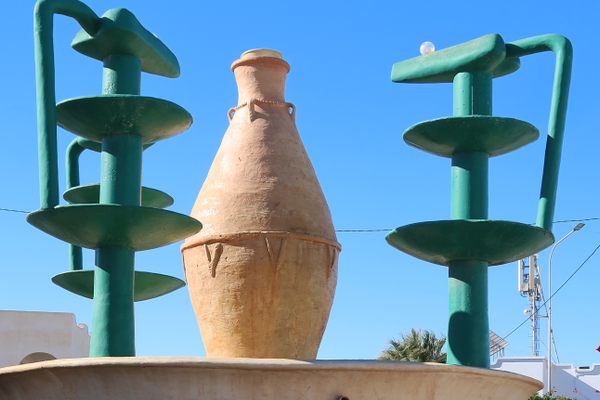AO Edited
Stone Cutters' Row
An ancient art form is kept alive in this corner of Nepal.
Chiseled into the side streets of Lalitpur, just south of Patan Durbar Square, are dozens of workshops featuring one of Nepal’s oldest crafts. The skills needed to carve the distinctive Nepali black limestone are handed down from generation to generation, and some of the artists in Stone Cutters’ Row can trace their artistic heritage back more than 500 years.
Today, the two primary forms of sculpting are traditional and modern, and the sculptures in Stone Cutters’ Row are almost entirely traditionally rendered using little more than hand-held hammers and chisels. The 2,000-year-old stone sculpture of Yaksha Bodhisattva housed in the National Museum in Kathmandu is the first example of this artistic tradition, and it was done using mostly the same techniques on display in Lalitpur.
Historically, craftsmen during the Licchavi period (4th-century CE) were noted for their artistry, which even modern masters have not been able to duplicate. Later, during the Malla period, kings were so protective of stone carving skills that they routinely cut off the hands of artisans to prevent neighboring monarchs from luring them away. Local lore recounts the story of one carver so gifted that after having both hands cut off, he continued to carve with his feet.
Not surprisingly, artisans were reluctant to take up the trade, and by the late 20th-century, it was estimated that only about five families remained stewards of the craft. A resurgence of interest in stone carving began in the 1990s as Nepal opened to tourists, and although some modern power tools are now used to keep up with demand, 75 percent of the work is still done the old-fashioned way. Today, there are perhaps 20 families engaged in the trade and efforts continue to formally teach stone-craft to younger generations in art schools.
As traditional works, sculptures are all made from the same limestone mined from the Chandragiri Hills, and the designs are largely the same from shop to shop. They primarily feature animal effigies (both real and mythical), water spigots, stupas, linga (the curiously phallic symbol of Shiva), and stelae featuring any number of different deities. True masters produce more imaginative and intricate works, sometimes in epic proportions weighing over one ton.
So if original Nepali artwork is your quarry, don’t seek out typical bore-ing souvenirs. Be boulder and head to Lalitpur where you will likely find some real gems.
Know Before You Go
To find Stone Cutters' Row, start at the main entrance to Patan Durbar Square and walk south-east on the main road. After about half a mile, the street will begin to narrow and you will start to see workshops on both sides of the road. Some are hidden in alleys and nooks. The row extends for perhaps less than a mile.





























Follow us on Twitter to get the latest on the world's hidden wonders.
Like us on Facebook to get the latest on the world's hidden wonders.
Follow us on Twitter Like us on Facebook